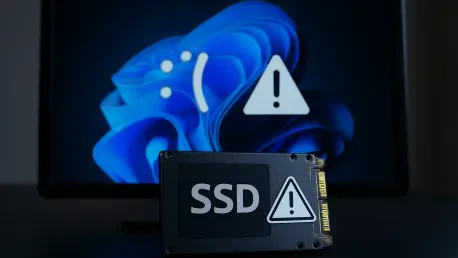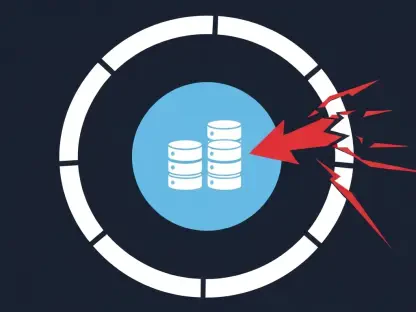What happens when a routine software update transforms into a nightmare of vanishing data and broken drives for countless users worldwide, sparking fear and uncertainty across the tech community? Reports of SSD and HDD failures following a recent Windows 11 security update have sent shockwaves through the tech community, leaving many to question the safety of their systems. From personal photo libraries to critical work files, the stakes couldn’t be higher. This unfolding drama has sparked heated debates on whether Microsoft’s latest patch is a silent saboteur or simply a scapegoat for unrelated hardware woes. Dive into this gripping investigation as the facts behind these alarming claims come to light.
Unraveling the Mystery of Windows 11 Drive Failures
The storm began when users started noticing something sinister after installing the August security update for Windows 11. Across forums and social media platforms, accounts poured in of solid-state drives (SSDs) and hard disk drives (HDDs) suddenly disappearing from systems or failing entirely. Many described their drives becoming inaccessible during intensive tasks like large file transfers, often with no chance of recovery. The timing of these failures—right after the update—fueled speculation that Microsoft’s latest patch might be the hidden culprit behind this wave of hardware disasters.
This issue quickly escalated from isolated complaints to a full-blown controversy as the number of affected users grew. Tech enthusiasts and everyday PC owners alike voiced their concerns, with some reporting losses of irreplaceable data, from family memories to business records. The central question emerged: could a security update, meant to protect systems, ironically be causing irreversible damage? This puzzling situation demanded answers, setting the stage for a deeper look into the relationship between software updates and hardware reliability.
Why the Windows 11 Update Debate Is Critical
In today’s digital age, where data often holds more value than the devices themselves, any threat to storage drives strikes at the heart of user trust. The August security patch for Windows 11, designed to fortify systems against cyber threats, instead became a focal point of criticism as stories of lost files and bricked drives surfaced. For millions relying on Windows 11 for work, education, and entertainment, this isn’t just a technical hiccup—it’s a potential catastrophe affecting livelihoods and personal treasures.
Beyond individual impact, this controversy raises broader questions about the balance between software updates and system stability. With Windows 11 powering a vast ecosystem of devices, the implications of a faulty update could ripple through industries and communities. Understanding whether this patch poses a genuine risk or if other factors are at play is vital for anyone who depends on their PC. This debate underscores the need for transparency and accountability in how updates are rolled out and tested.
Digging Into the Windows 11 SSD Failure Investigation
Microsoft responded swiftly to the mounting outcry by launching a comprehensive investigation into the reported drive failures tied to the Windows 11 24## security update. User accounts painted a grim picture: drives often failed during high-stress operations, particularly on storage units over 60% full, with many experiencing permanent data loss. These consistent patterns suggested to some that the update might be triggering underlying issues, prompting a rigorous analysis to separate fact from speculation.
The company’s probe, conducted alongside major SSD and HDD manufacturers, analyzed telemetry data from millions of Windows 11 systems. The findings revealed no abnormal surge in drive failures following the update, pointing away from software as the root cause. Hardware partners, including Phison—a key SSD controller manufacturer—conducted over 4,500 hours of testing and reported an inability to replicate the failures under controlled conditions. This data-driven conclusion suggested that natural wear or pre-existing defects might be the true culprits.
Yet, not everyone is convinced by these results. Critics argue that the sheer volume of failures immediately post-update, even in newer drives, challenges the notion of mere coincidence. Some experts propose an indirect effect, theorizing that the update could stress already vulnerable drives under specific circumstances, though such claims remain unverified. This ongoing tension between empirical evidence and user experiences keeps the discussion alive, highlighting the complexity of diagnosing hardware-software interactions.
Hearing Both Sides: Official Statements and User Experiences
Microsoft issued a clear statement through its admin center, asserting, “Extensive testing with hardware partners confirms no connection between the August update and the reported drive failures.” This position is reinforced by Phison’s findings, with the manufacturer noting, “No issues were reproducible in our labs despite exhaustive efforts.” These official declarations aim to reassure users that the update is safe, leaning on hard data to dispel fears of a widespread software flaw.
Contrasting sharply with this narrative are the raw, emotional stories from affected individuals. A user on a popular tech forum shared a heartbreaking account: “My SSD crashed mid-transfer after the update, wiping out years of project files. How can this not be related?” Such testimonies, echoing across online communities, reveal a profound sense of loss and skepticism toward official conclusions. The gap between systematic testing and personal devastation fuels a persistent divide in perceptions.
This clash of perspectives illustrates a broader challenge in the tech world: reconciling cold, hard facts with the very real human toll of technical failures. While data may exonerate the update, the frustration and distrust among users cannot be easily dismissed. These voices add a crucial dimension to the story, reminding all stakeholders that beyond statistics lie real lives impacted by every byte of lost data.
Practical Advice for Windows 11 Users Facing Uncertainty
Amid the unresolved debate over the update’s role in drive failures, users can take actionable steps to protect their systems. One essential measure is to regularly check drive health using Windows’ built-in tools or reliable third-party software. Identifying potential weaknesses before installing updates, especially on drives nearing full capacity, can help mitigate risks of sudden failure during critical operations.
Another vital precaution is maintaining consistent backups of important data. Storing files on external drives or cloud services ensures that even if a failure occurs, precious information remains safe. Additionally, users might consider avoiding heavy tasks like massive file transfers immediately after updates until more clarity emerges on this issue. Such caution can act as a buffer against potential stress on hardware.
For those with Windows 11 Pro, pausing updates temporarily to monitor community feedback offers an extra layer of control. Users on the Home edition, with less flexibility, should stay updated through Microsoft’s support channels for any new advisories. These practical tips empower individuals to navigate the uncertainty while the tech giant continues to assess incoming reports and refine its understanding of the situation.
Reflecting on a Tech Saga of Trust and Technology
Looking back, the controversy surrounding the Windows 11 August security update unfolded as a stark reminder of the delicate interplay between software innovation and hardware reliability. Microsoft’s thorough investigation, backed by industry partners, stood firm in clearing the update of blame, yet the lingering doubts of affected users painted a picture of unresolved tension. The emotional weight of lost data clashed with clinical conclusions, leaving a lasting imprint on the discourse around tech accountability.
As this chapter drew to a close, it became evident that safeguarding data demanded more than just trusting updates—it required proactive steps. Users were encouraged to prioritize backups, monitor drive health, and approach updates with informed caution. Moving forward, the tech community could benefit from enhanced communication between developers and users, ensuring that even rare issues find a platform for resolution. This saga, while challenging, paved the way for stronger vigilance and a renewed focus on protecting what matters most in a digital world.









